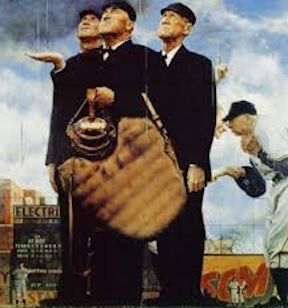 Covering Rundowns
Covering Rundowns
While covering rundowns is pretty straightforward, there are a handful of important nuances:
- Angle over distance is paramount. As you change directions and move back and forth with the runner, don’t forget to preserve angles in case the play gets to the base. In other words, don’t get sucked too deeply into the rundown. Keep your distance and preserve your options.
- Keeping your distance from the rundown also decreases the amount of running you need to do to stay with the play.
- With two umpires on a rundown, normally it’s the umpire whom the runner is approaching who makes the call.
- In cases where a partner joins a rundown in progress, the originating umpire stays with both sides until the partner signals verbally (and loudly) “I’ve got this end.” However, for the umpire joining the rundown, only call “I’ve got this end” when the runner is moving away from you so you’ll have the runner when he changes direction heading back to you.
- When in the first to third situation (runners on 1B and 3B), umpires must handle the rundown by themselves:
- On a rundown between third and home (and a runner on first base), the PU has it all because U1 must stay in the working area to cover in case R1 tries to advance to second.
- On a rundown between first and second (and a runner on third base), U1 has it all, because the PU must stay home to cover in case R3 tries to advance to home.
- Obstruction. You must remain alert to obstruction, particulalry if the rundown becomes extended with many throws and changes of direction. The fielder, once he throws the ball (and is no longer in possession of the ball), must not in any way impede the progress of the runner. If he does by colliding or otherwise impeding the runner's progress, you have obstruction. The award in this situation is the base beyond the last base legally held.

